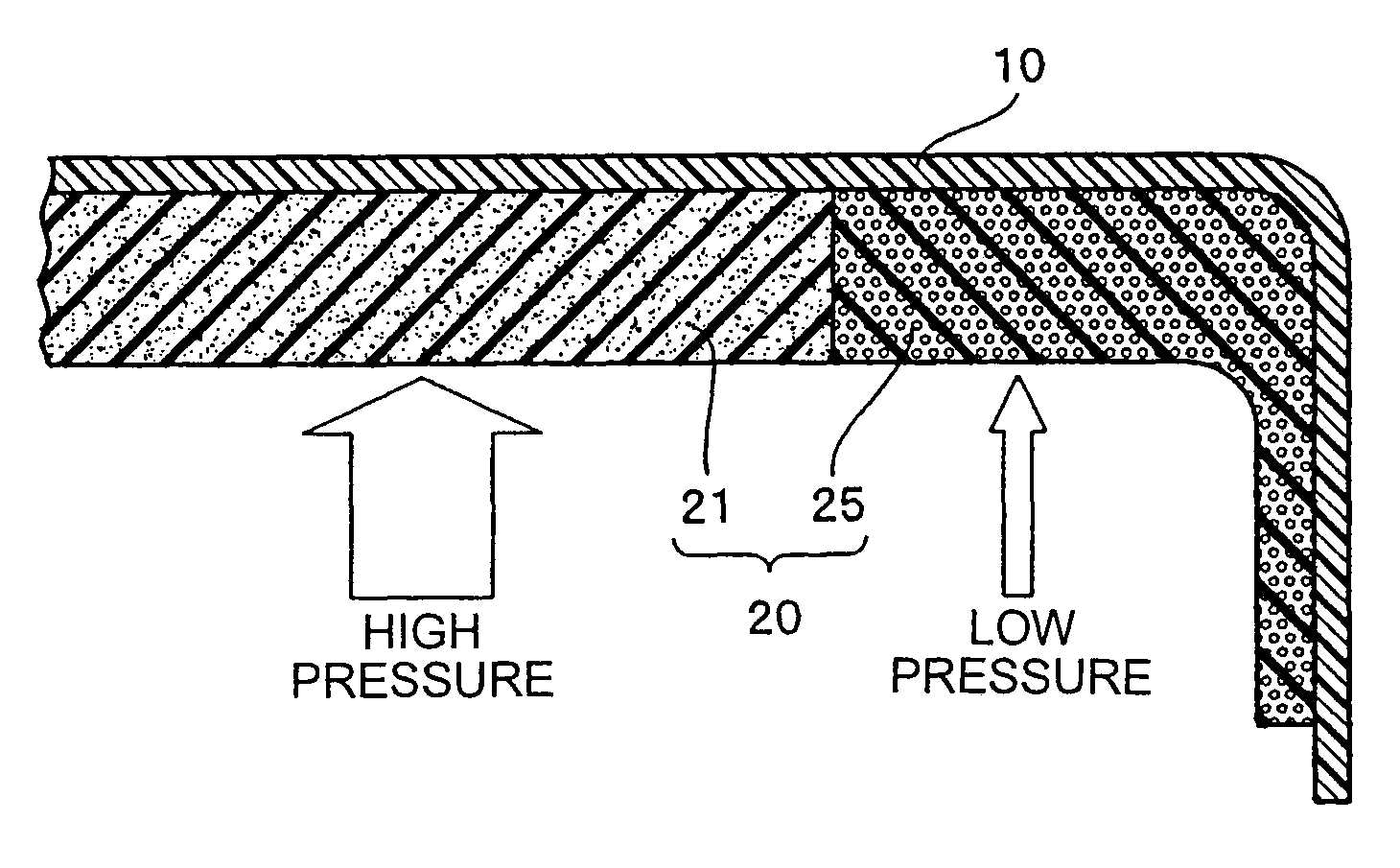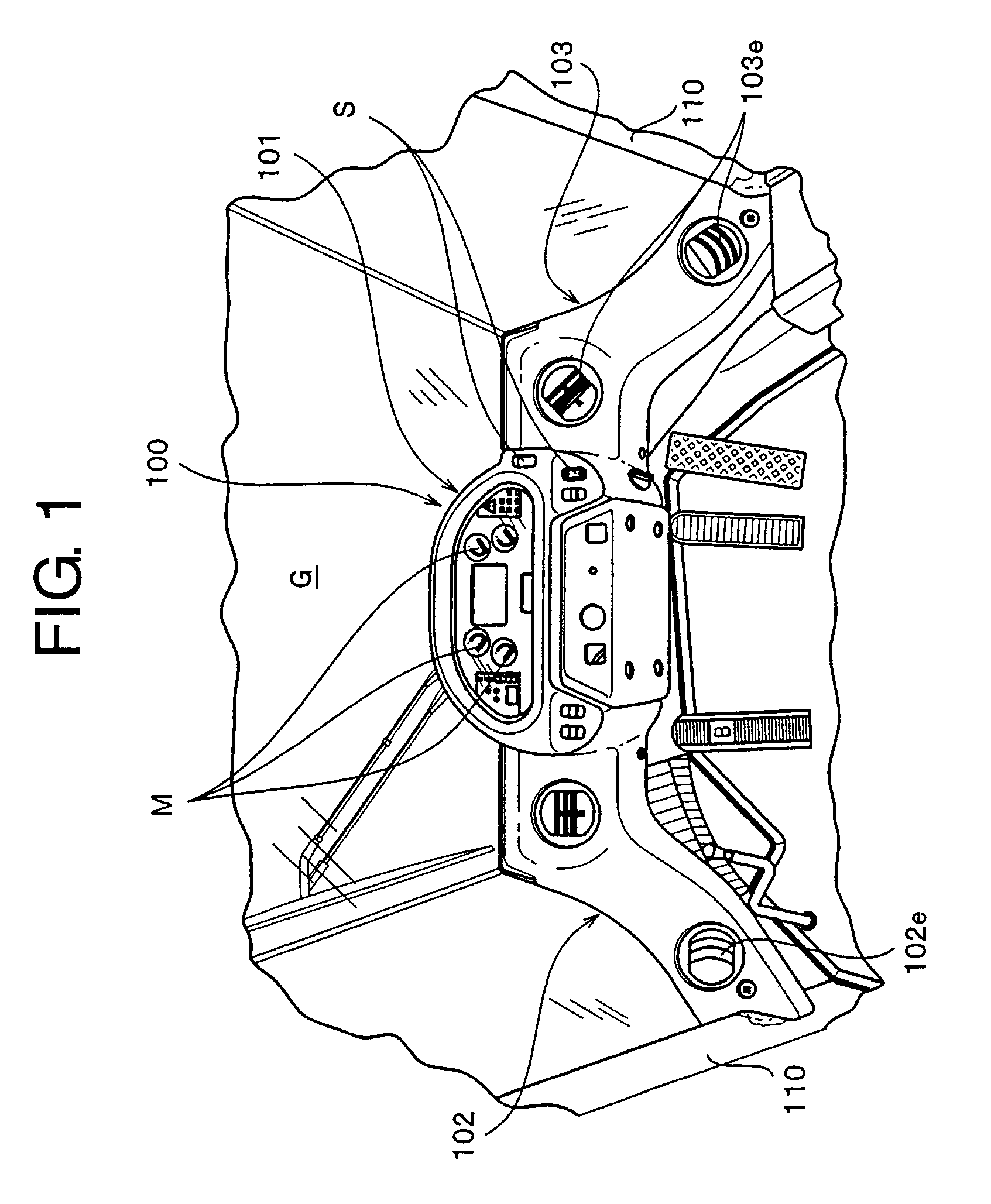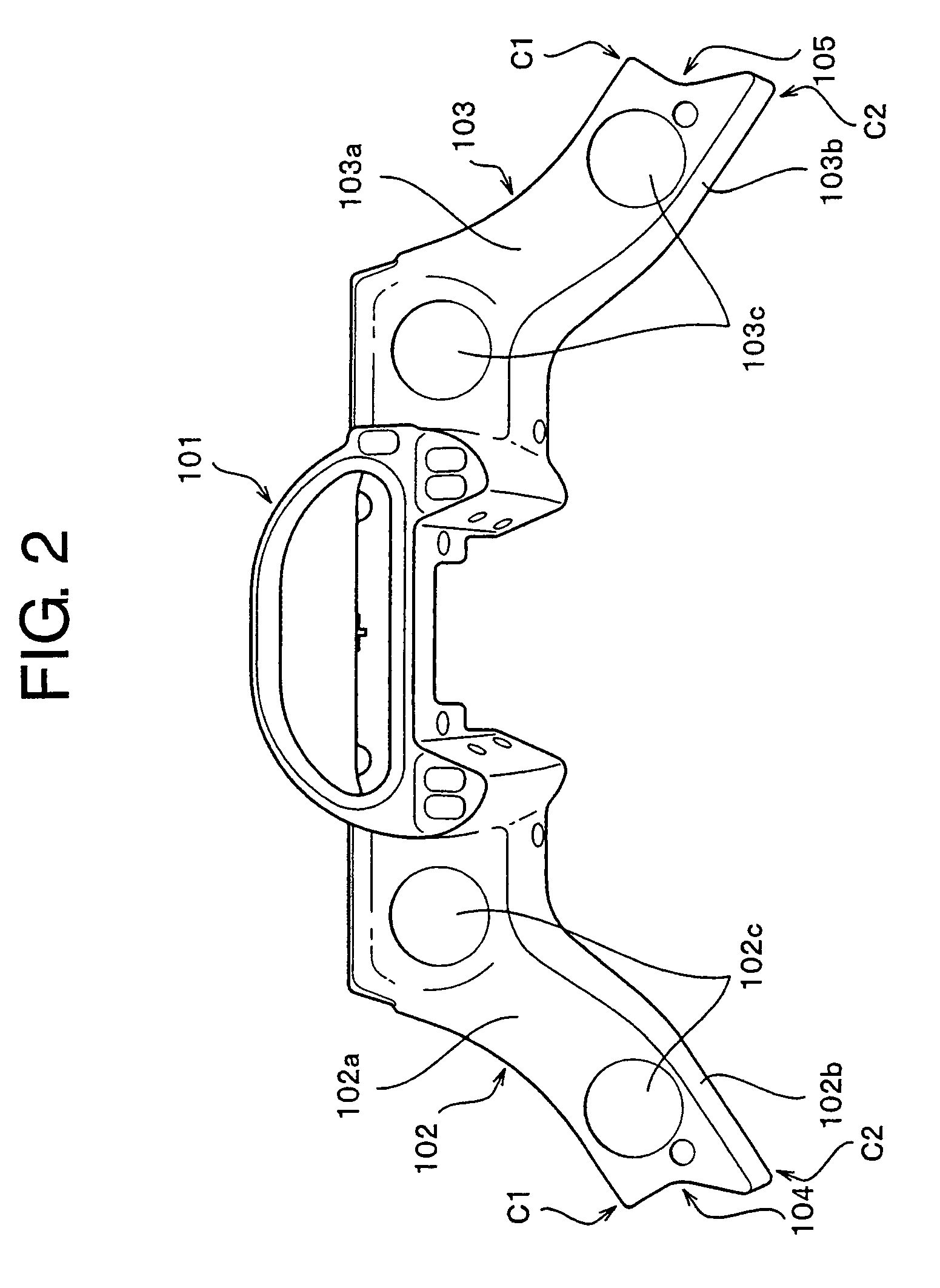Interior trim member of work vehicle and method of manufacturing the same
a technology for interior trim and work vehicles, which is applied in the field of interior trim members, can solve the problems of inability to easily remove inability to insert the front dash panel forward anymore, and inability to secure the front dash panel, etc., and achieves the effect of secure elastic deformation, easy attachment and detachment of the interior trim member, and easy detachmen
- Summary
- Abstract
- Description
- Claims
- Application Information
AI Technical Summary
Benefits of technology
Problems solved by technology
Method used
Image
Examples
Embodiment Construction
[0084]A description will be given specifically of typical embodiments in accordance with the present invention with reference to the accompanying drawings.
[0085]FIG. 1 shows an outer appearance at a time of viewing a part of a passenger cabin in which a dash board 100 corresponding to an interior trim member is installed to a front side of a driver seat of a wheel load in accordance with a first embodiment of the present invention. As is understood from the drawing, an instruments and gauges arranging portion 101 to which various instruments and gauges M and switches S are attached is arranged in a center portion of the dash board 100, and there are provided left and right wing portions 102 and 103 extending to a diagonally near side while expanding a gap from both left and right side ends. The instruments and gauges arranging portion 101 is formed as a horizontally C-shaped form, and the instruments and gauges M are fitted and fixed to a center thereof while being tilted to a front...
PUM
| Property | Measurement | Unit |
|---|---|---|
| bending strength | aaaaa | aaaaa |
| bending strength | aaaaa | aaaaa |
| thickness | aaaaa | aaaaa |
Abstract
Description
Claims
Application Information
 Login to View More
Login to View More - R&D
- Intellectual Property
- Life Sciences
- Materials
- Tech Scout
- Unparalleled Data Quality
- Higher Quality Content
- 60% Fewer Hallucinations
Browse by: Latest US Patents, China's latest patents, Technical Efficacy Thesaurus, Application Domain, Technology Topic, Popular Technical Reports.
© 2025 PatSnap. All rights reserved.Legal|Privacy policy|Modern Slavery Act Transparency Statement|Sitemap|About US| Contact US: help@patsnap.com



